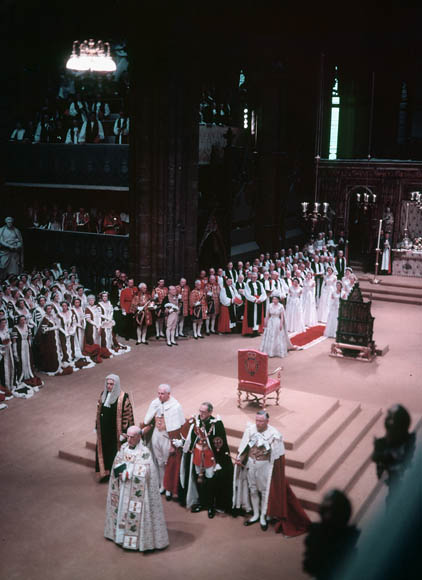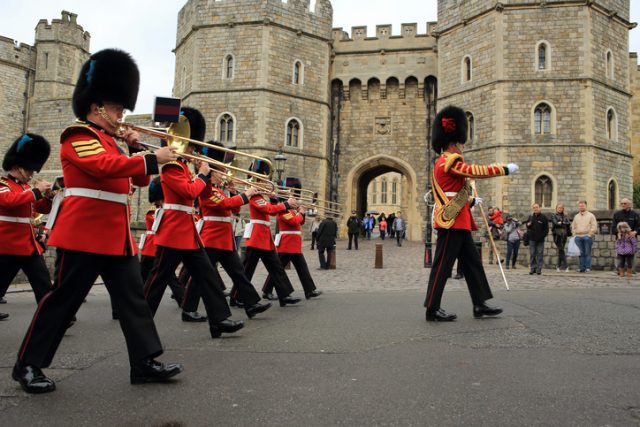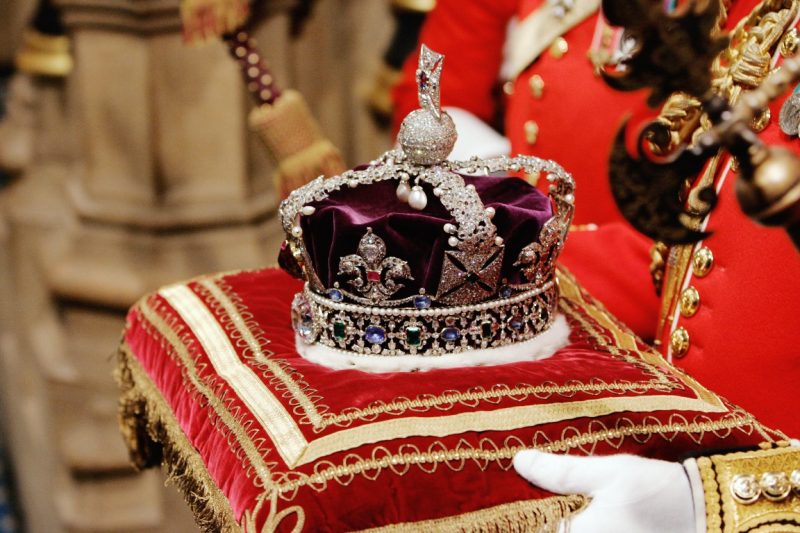Often seen as the symbols of the British monarchy, the world-famous Crown Jewels have an immense historical and cultural significance, representing many centuries of tradition. Displayed proudly at the Jewel House in the Tower of London, where they have been held since the 14th century, the Crown Jewels occupy a special place in the history of the country. They are certainly among the most visited objects in Britain, perhaps the world.
This irreplaceable collection of sacred and ceremonial objects dates primarily from the coronation of Charles II in 1661, with only four items of an older set of coronation regalia that survived the English Civil War–the 12th-century anointing spoon and three 17th century swords. The collection includes the crowns, rings, swords, spurs, orbs, bracelets, and various other objects used for the coronation ceremony.
Apart from occupying an important place in the history of the British monarchy, the 23,578 precious gems that bedeck these objects have captured the hearts and minds of many people in history. As such, the Crown Jewels became top priority during World War II and when Germany threatened to invade Britain, George VI, Elizabeth II’s father, masterminded a secret plan to keep them away from the hands of Nazis.

His plan, according to a new documentary aired on the Smithsonian Channel, included removing the precious stones from the Imperial State Crown, which the Queen wears to open Parliament every year, putting them in a biscuit tin, and finally, burying them in the grounds of Windsor Castle.
According to the Times, there were various rumors concerning the removal of the precious stones and their hiding place from the Nazis. The most popular theory being the one which includes taking them from the Tower of London to Windsor Castle in Berkshire. Other theories suggest that the precious gems were possibly being kept in a vault in Canada, a secret tunnel at a prison in Devon, or a cave in Wales.

The plan, as mentioned, was very secret. In fact, it was so secret that Queen Elizabeth, no older than 14 years at the time, was not fully aware of the details. Royal commentator Alastair Bruce, the man who interviews Queen Elizabeth for the documentary, was the first to tell the Queen her father’s secret. “What was so lovely was that the Queen had no knowledge of it,” Bruce told the Times. “Telling her seemed strangely odd.”
A set of letters unearthed by Oliver Urquhart Irvine, royal librarian and assistant keeper of the Queen’s Archives, proved to be crucial in the astonishing discovery. In the letters, Sir Owen Morshead, a former royal librarian, describes to George VI’s mother, Queen Mary, how he managed to remove the precious gems from the Imperial State Crown.

In order to avoid being seen by the Luftwaffe, palace staff had to work at night. They dug a deep hole beneath a sally port, one of the secure entrances to Windsor Castle, and two chambers with steel doors were also constructed. “They dug out this fresh, very virgin white chalk and they had to hide it with tarpaulins so when the aircraft flew over at night no clue was given to the German Luftwaffe that anything was going on,” Bruce told the Times. The last thing they did was to lock in the biscuit tin containing the precious gems. The chamber could only be accessed through a trapdoor that exists even today.
Related story from us: The Imperial Crown: the most important part of Imperial Regalia
This one-hour documentary, The Coronation, provides not just the information of the hidden biscuit tin full of precious jewels but also offers a truly rare glimpse into the life of Elizabeth II and the experience of her coronation, jokingly stating that “you can’t look down to read the speech,” when wearing the Imperial State Crown, which, by the way, weighs two pounds, thirteen ounces, because “if you did, your neck would break.”
